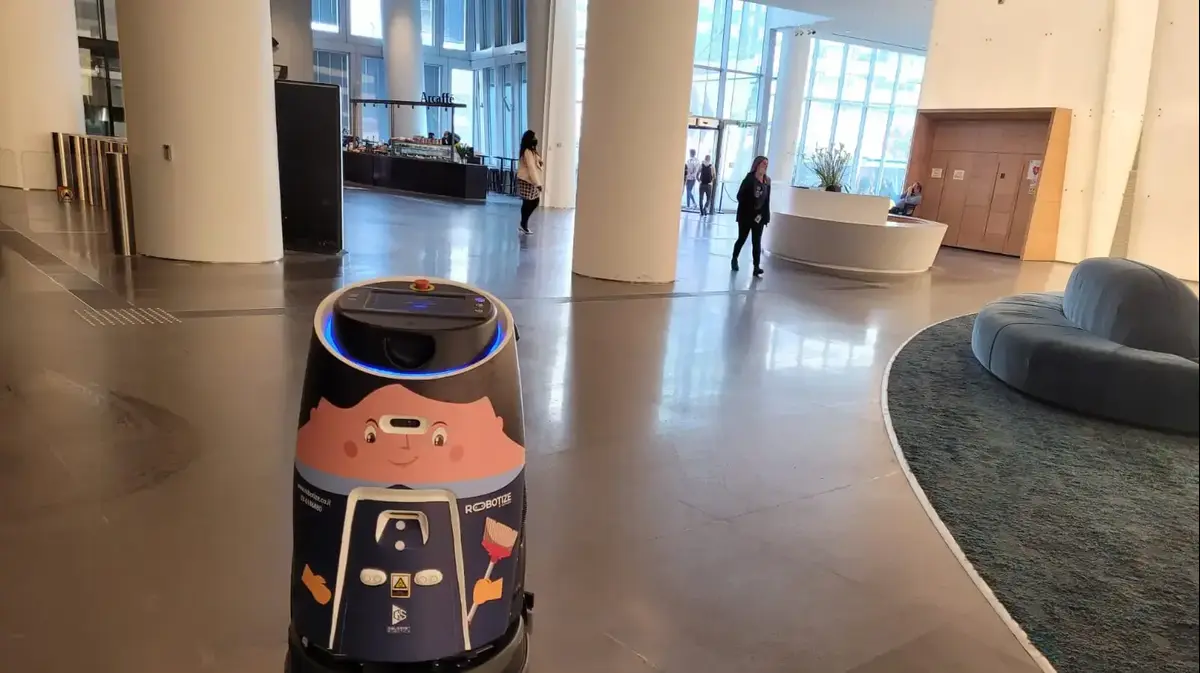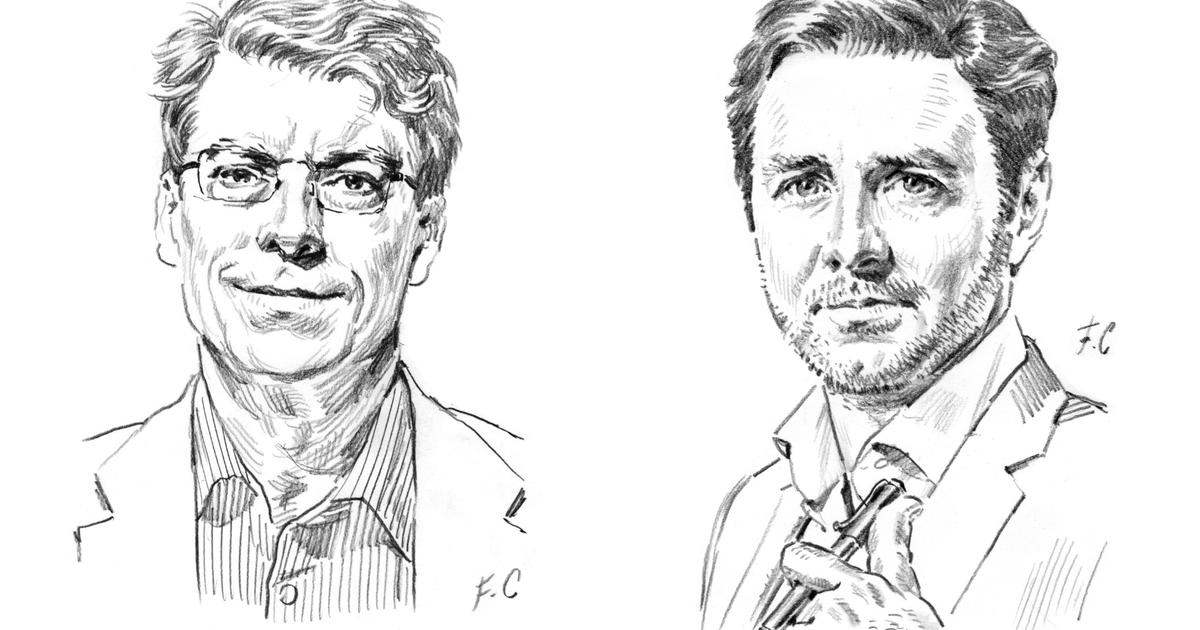Think about this: 3:00 p.m. on February 5, 2018. In a matter of minutes, the Dow Jones index on the New York Stock Exchange falls 1,500 points.
Two trillion dollars just flew;
a waste of money until then unthinkable for such a short space of time.
Minutes later, the fall extends to all the stock markets of the planet;
from Frankfurt to Tokyo, the disaster is unstoppable.
No one knows who or what caused it.
Contrary to previous stock market crashes, there is no obvious economic reason, no sudden armed conflicts in distant or near geographies, no plans for mass unemployment of workers in some multinational company.
The only explanation is new, so new it's unbelievable: "Traders have traded too fast."
But who are these fast stock traders?
They are robots.
Yes, it is about bots.
They are the ones who suddenly, self-accelerating, have caused the fall.
More information
You will hear more and more synthetic voices.
And they will seem human to you
The curious thing about the case is that such bots —after all, virtual tools that operate through algorithms— (...) had been designed for the opposite: in addition to carrying out economic transactions faster than humans, they also had to control the classic ones. irrational escalations typical of brokers and balance the world market.
Due to their condition as disaffective machines, they had to work outside of human emotional drives and execute, at the same time, what in financial jargon is known as “high-frequency operations”, operations that consist of very fast monetary exchanges —purchasing and selling. in milliseconds—in such a way that the variable of the always hesitant or even malicious human hand would be deactivated.
Too much optimism, too much faith in machines.
No one foresaw that leaving human stock traders unresponsive could open the door to economic cataclysm.
The bots were not intended to self-accelerate, in theory there were enough control mechanisms;
It didn't happen like that, the bots ended up becoming entirely autonomous operators, we would say with a life of their own.
Generally speaking, trading bots operate in networks, appearing and disappearing without a trace, driving assembled algorithms that serve a given trade, and then, stimulated by other stock predictions coming from their own botnet, migrating elsewhere to , in a matter of milliseconds, perform another operation.
Therefore, human stock market operators remain outside of such maneuvers, being forced to cede decision-making to such digital expert systems, thus converted into systems that, somehow and under certain conditions —such as the case of February 5, 2018—, can become self-constructed, come to life outside of the times and spaces appropriate to human cognition.
As almost always happens, reality exceeds the prospects proposed by imaginative science fiction.
That is why it must be said that we are not talking about a great brain that, in the shadows and in the manner of classic future narratives, controls the stock market and our lives, but rather the opposite: a network made up of a myriad of automatic micro-operators , bots that, in themselves and individually, are nothing, lacking real power, but that, combined and operating in a network, make up a real virtual space, intelligent in its own way.
In this sense, they have more to do with children's legends such as the legion of ants that, due to their sudden organizational complexity, destroy the world—as in
When the Marabunta Roars.
—, that with the unitary brain HAL that, as a supreme deity, appears in
2001. A space odyssey
.
Be that as it may, to such bots we have delegated an ever-widening fraction of our decision-making.
This practice goes far beyond operations on the stock market, it includes activities such as the control, at its primary base, of air traffic at airports, or simply the active search for possible holiday destinations, which are suggested to us by advertisements that assault our screens based on all those personal data that, consciously or innocently, we have previously provided on the networks to consumer and leisure companies.
In this way, bots, through an enormous data storage capacity, and aided by their high processing speed and algorithmic sophistication, lead to automation tasks that, at any given moment, may be beyond our control.
And they do it because of a special characteristic that they possess,
perhaps the one that will most disturb the user who thinks about what the ontology of all this jungle of data and patterns and decisions consists of: the interpretative faculty of such microrobots.
Because who interprets —who is capable of
interpreting
—, to a greater or lesser degree, is acquiring an autonomous dimension —not exactly theatrical but
performative
— through which he decides to behave in a situation in one way or another;
in this case, they make the decision based on a multitude of data combined with algorithmic rules so complex that they can be said to have the appearance of a life of their own.
And for practical purposes, they do.
They evaluate cause and effect options among various possibilities, envision a scenario, and decide based on patterns they have created themselves.
All this stimulates the appearance of a new kind of ontology that, strictly speaking, is not in the object, neither in the animal nor in the human.
It is true that it is not an artificial intelligence in the proper sense of common science fiction —a term that, in these pages, because it is confusing and too closely linked to fantasy, we will avoid as much as possible—, but it is something that we can call technological-digital intelligence.
This kind of ontology, endowed with its technological-digital intelligence, functions as a grouping of networks in a network, living entities in their own way as long as they comply, first of all, with the basic rule of thermodynamics of living systems, that by which an open system is one that, through its walls and borders, exchanges three classes of materials with its environment: matter, energy and information, and, secondly, because these exchanges derive from autonomous decision-making in the sense of unforeseeable and contingent for an external observer, that is, for us humans.
This is how the automated botnet proceeds, to the point that it acquires the characteristics of autocatalytic processes, processes that learn, evolve by
feedback
, as do intelligent living beings.
Indeed, on that February 5, 2018, in a matter of milliseconds, the bots bought and sold on their own such a number of shares on the stock market that it is not only that the human stock market system collapsed, but it can be said that the bots created their their own habitat, a useful and complex space in which they could continue to function indefinitely with their own rules, their own ecosystem and environment, detrimental to the rules established by the human but beneficial to the new "bot system".
Agustín Fernández Mallo
(A Coruña, 1967) is a novelist and essayist.
This excerpt is a preview of his latest book, 'The Shape of the Multitude', which the Galaxia Gutenberg publishing house publishes on February 8.
Subscribe here
to the weekly newsletter of Ideas.
Subscribe to continue reading
Read without limits
Keep reading
I'm already a subscriber








/cloudfront-eu-central-1.images.arcpublishing.com/prisa/A4BSBHWHEBCEVM26XT3P3MKGLE.jpg)
